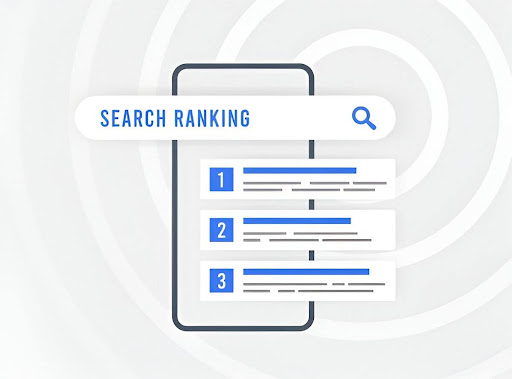The Future of Cloud-Based Alarm Monitoring: Trends and Opportunities

The Rise of Cloud-Based Alarm Monitoring Systems
Over the past decade, the adoption of cloud-based alarm monitoring systems has accelerated at an unprecedented rate. Unlike traditional security systems that depend heavily on on-site hardware and manual oversight, today’s platforms leverage cloud technology to offer users seamless protection, 24 hours a day. This transformative approach provides access to system controls and live alerts from virtually anywhere, through a secure internet connection. As a result, businesses and homeowners are empowered to react to threats or check their property status on the go, whether halfway across town or traveling internationally.
The advantages of cloud-hosted monitoring are clear when contrasted with legacy systems, which often require expensive installation, frequent maintenance, and dedicated on-site staff. Cloud innovation has streamlined this process by centralizing management in secure data centers, eliminating the risk of equipment failures that could compromise local systems. If you’re looking for more information or practical applications of these platforms, you can click here to understand how hosted monitoring central stations are shaping the modern security landscape.
Key Features Benefitting Users
Among the most notable benefits of cloud-based alarm monitoring is the enhanced accessibility users enjoy. Mobile access, for example, has turned smartphones and tablets into powerful security management tools. Using dedicated apps, users receive instant alerts, arm or disarm their alarms remotely, and view surveillance footage anytime. Unlike the outdated systems of yesterday, cloud monitoring platforms are constantly updated, providing the latest software features and security patches without the need to purchase new hardware.
- Real-time push notifications or SMS alerts to keep users informed as incidents unfold.
- Effortless updates and feature rollouts are handled remotely without invasive installation.
- Seamless integration with other innovative technologies, including lights, thermostats, doors, and surveillance cameras.
These capabilities translate to greater convenience and expanded peace of mind, particularly for those who overschedule multiple properties or move between locations regularly. All security controls and data are consolidated in a single dashboard, making security management simpler than ever. This centralized approach reduces operational friction and creates opportunities for more insightful reporting and trend analysis.
Trends Shaping the Industry
The evolution of cloud-based alarm monitoring comes with new opportunities and new threats, particularly in cybersecurity. Cybercriminals are becoming increasingly sophisticated, and unsecured cloud systems can be vulnerable if not properly managed. Reflecting the importance of this, the Cybersecurity and Infrastructure Security Agency routinely publishes best practices like robust encryption, regular system updates, and multi-factor authentication methods to help organizations safeguard their cloud infrastructure.
Artificial intelligence (AI) is also gaining momentum in this field. AI-powered monitoring enables advanced motion detection, voice analytics, and even predictive incident analysis. By learning user patterns and identifying anomalies, these systems significantly reduce nuisance alarms and ensure that legitimate threats are prioritized. Furthermore, the increasing adoption of smart home and office devices demands that cloud monitoring solutions be flexible and compatible with a growing range of third-party products, from environmental sensors to networked entry controls.
Reducing False Alarms and Improving Response Time
False alarms are a significant drain, wasting resources, straining relationships with local authorities, and sometimes incurring fines. Older alarm panels often struggle to distinguish between harmless activity and genuine threats, but this is where cloud-based and AI-boosted systems shine. They use sophisticated analytics to interpret data from numerous sources, automatically filtering out benign events like a pet moving in front of a camera or weather-triggered door activity.
For example, a national retail chain may have consistently faced too many false alarms, each provoking unnecessary police dispatches and store downtime. After transitioning to a cloud-hosted monitoring solution with built-in data analysis, the retailer observed a substantial decrease in unwarranted alerts. Local police and fire departments, in turn, responded faster to genuine emergencies, demonstrating how AI and analytics can optimize both security and public safety response.
Regulatory Requirements and Industry Standards
With alarm systems touching sensitive user data and often directly involving emergency services, regulatory oversight is tightening. Providers must meet a growing number of regulations aimed at safeguarding customer privacy and maintaining reliable operations. Security professionals and consumers alike can benefit from following regulatory developments, such as new state regulations impacting the security industry. These laws can require everything from rigorous background checks for monitoring staff to strict encryption protocols and transparent notification procedures.
Compliance with standards like SOC 2, Underwriters Laboratories (UL), and others assures users that their provider follows industry best practices for data integrity, redundancy, and accessibility. This reduces the risk of noncompliance penalties and data breaches and builds greater confidence and trust between users and providers.
Addressing Data Privacy and Reliability Concerns
Storing and transferring alarm data via the cloud raises essential privacy and risk management questions. Users want assurances that their footage, logs, and personal details are not vulnerable to hackers or mismanagement. A reliable provider details how it is encrypted, which data centers are used (and where they are located), and what internal policies are in place for regular and auditing.
Service reliability cannot be overlooked, either. Cloud-based systems are useless if they go offline right when help is needed. This is why top-tier providers invest in redundant systems—such as geographically distributed servers—and regularly test their failover protocols. Such designs ensure service continuity even during natural disasters, cyber incidents, or hardware failures, offering a level of confidence that standard local systems rarely match.
Tips for Choosing a Cloud-Based Alarm Monitoring Provider
- Look for providers with recognized certifications from industry organizations.
- Read the fine print on uptime guarantees and determine if 24/7 technical support is available.
- Inquire about cybersecurity practices, including encryption, vulnerability monitoring, and response mechanisms.
- Check how well their solutions integrate with your current or planned devices.
- Research independent user reviews and testimonials to get an unbiased view of customer satisfaction.
A diligent selection process enhances your safety and streamlines ongoing support. Choosing wisely ensures you have modern, secure, and responsive services exactly when needed.
Looking Ahead: Opportunities and Innovations
The fast pace of digital transformation in the alarm monitoring industry means the future is brimming with new opportunities. Ongoing advancements in automation can take security from reactive to proactive, using predictive analytics to spot risks before they escalate. For example, future systems may be able to warn of vulnerabilities based on analysis of user patterns and situational context, not just trigger events.
Integration with wearable tech, voice assistants, drones, or even city-wide safety networks could bring new layers of protection not previously imagined. Ultimately, those who stay updated on news, regulations, and technology trends will be best equipped to use, recommend, or manage the next generation of cloud-based alarm monitoring systems, ensuring safety and peace of mind well into the future.






